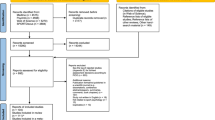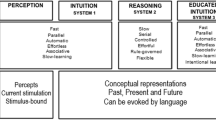Abstract
The main purposes of the present study were to substantiate the existence of the four types of performance categories (i.e., optimal-automatic, optimal-controlled, suboptimal-controlled, and suboptimal-automatic) as hypothesised in the multi-action plan (MAP) model, and to investigate whether some specific affective, behavioural, psychophysiological, and postural trends may typify each type of performance. A 20-year-old athlete of the Italian shooting team, and a 46-year-old athlete of the Italian dart-throwing team participated in the study. Athletes were asked to identify the core components of the action and then to execute a large number of shots/flights. A 2 × 2 (optimal/suboptimal × automated/controlled) within subjects multivariate analysis of variance was performed to test the differences among the four types of performance. Findings provided preliminary evidence of psychophysiological and postural differences among four performance categories as conceptualized within the MAP model. Monitoring the entire spectrum of psychophysiological and behavioural features related to the different types of performance is important to develop and implement biofeedback and neurofeedback techniques aimed at helping athletes to identify individual zones of optimal functioning and to enhance their performance.


Similar content being viewed by others
References
Barry, R. J., & Sokolov, E. N. (1993). Habituation of phasic and tonic components of the orienting reflex. International Journal of Psychophysiology, 15, 39–42. doi:10.1016/0167-8760(93)90093-5.
Bertollo, M., Robazza, C., Falasca, W. N., Stocchi, M., Babiloni, C., Del Percio, C., et al. (2012). Temporal pattern of pre-shooting psychophysiological states in elite athletes: A probabilistic approach. Psychology of Sport and Exercise, 13, 91–98. doi:10.1016/j.psychsport.2011.09.005.
Borg, G. (2001). Borg’s range model and scales. International Journal of Sport Psychology, 32, 110–126.
Bortoli, L., Bertollo, M., Hanin, Y. L., & Robazza, C. (2012). Striving for excellence: A multi-action plan intervention model for shooters. Psychology of Sport and Exercise, 13, 693–701. doi:10.1016/j.psychsport.2012.04.006.
Dawson, M. E., Schell, A. M., & Filion, D. L. (2007). The electrodermal system. In J. Cacioppo, L. Tassinary, & G. Bernston (Eds.), The handbook of psychophysiology (3rd ed., pp. 159–181). New York: Cambridge University Press.
Del Percio, C., Babiloni, C., Bertollo, M., Marzano, N., Iacoboni, M., Infarinato, F., et al. (2009). Visuo-attentional and sensorimotor alpha rhythms are related to visuo-motor performance in athletes. Human Brain Mapping, 30, 3527–3540. doi:10.1002/hbm.20776.
Doppelmayr, M., Finkenzeller, T., & Sauseng, P. (2008). Frontal midline theta in the pre-shot phase of rifle shooting: Differences between experts and novices. Neuropsychologia, 46, 1463–1467. doi:10.1016/j.neuropsychologia.2007.12.026.
Edmonds, W. A., Mann, D. T. Y., Tenenbaum, G., & Janelle, C. (2006). Analysis of affect-related performance zones: An idiographic approach using physiological and introspective data. The Sport Psychologist, 20, 40–57.
Ericsson, K. A. (2003). Development of elite performance and deliberate practice: An update from the perspective of the expert performance approach. In J. L. Starkes & K. A. Ericsson (Eds.), Expert performance in sports: Advances in research on sport expertise (pp. 49–83). Champaign: Human Kinetics.
Goodman, S., Haufler, A., Shim, J. K., & Hatfield, B. (2009). Regular and random components in aiming-point trajectory during rifle aiming and shooting. Journal of Motor Behavior, 41, 367–382. doi:10.3200/JMBR.41.4.367-384.
Guillot, A., Collet, C., Dittmar, A., Delhomme, G., Delemer, C., & Vernet-Maury, E. (2003). The physiological activation effect on performance in shooting: Evaluation through neurovegetative indices. Journal of Psychophysiology, 17, 214–222. doi:10.1027/0269-8803.17.4.214.
Hanin, Y. L. (Ed.). (2000). Emotions in sport. Champaign: Human Kinetics.
Hanin, Y. L. (2007). Emotions in sport: Current issues and perspectives. In G. Tenenbaum & R. Eklund (Eds.), Handbook of sport psychology (3rd ed., pp. 31–58). Hoboken: Wiley.
Hanin, Y., & Hanina, M. (2009). Optimization of performance in top-level athletes: An action-focused coping approach. International Journal of Sports Science and Coaching, 4, 47–91. (with the Commentators).
Hanin, Y., & Syrjä, P. (1996). Predicted, actual, and recalled affect in Olympic-level soccer players: Idiographic assessments on individualized scales. Journal of Sport and Exercise Psychology, 18, 325–335.
Harmison, R. J. (2006). Peak performance in sport: Identifying ideal performance states and developing athletes’ psychological skills. Professional Psychology: Research and Practice, 37, 233–243. doi:10.1037/0735-7028.37.3.233.
Hatfield, B. D., & Kerick, S. E. (2007). The psychology of superior sport performance: A cognitive and affective neuroscience perspective. In G. Tenenbaum & R. Eklund (Eds.), Handbook of sport psychology (3rd ed., pp. 84–109). Hoboken: Wiley.
Hatfield, B. D., Landers, D. M., & Ray, W. J. (1987). Cardiovascular-CNS interactions during a self-paced, intentional attentive state. Psychophysiology, 24, 542–549.
Haufler, A. J., Spalding, T. W., Santa Maria, D. L., & Hatfield, B. D. (2000). Neuro-cognitive activity during a self-paced visuospatial task: Comparative EEG profiles in marksmen and novice shooters. Biological Psychology, 53, 131–160. doi:10.1016/S0301-0511(00)00047-8.
Hillman, C. H., Apparies, R. J., Janelle, C. M., & Hatfield, B. D. (2000). An electrocortical comparison of executed and rejected shots in skilled marksmen. Biological Psychology, 52, 71–83. doi:10.1016/S0301-0511(99)00021-6.
Janelle, C. M., Hillman, C. H., Apparies, R. J., Murray, N. P., Meili, L., Fallon, E. A., et al. (2000). Expertise differences in cortical activation and gaze behavior during rifle shooting. Journal of Sport and Exercise Psychology, 22, 167–182.
Kamata, A., Tenenbaum, G., & Hanin, Y. L. (2002). Individual zone of optimal functioning (IZOF): A probabilistic estimation. Journal of Sport and Exercise Psychology, 24, 189–208.
Kimiecik, J. C., & Jackson, S. A. (2002). Optimal experience in sport: A flow perspective. In T. S. Horn (Ed.), Advances in sport psychology (2nd ed., pp. 501–527). Champaign: Human Kinetics.
Konttinen, N., & Lyytinen, H. (1992). Physiology of preparation: Brainslow waves, heart rate, and respiration preceding triggering in rifle shooting. International Journal of Sport Psychology, 23, 110–127.
Konttinen, N., Lyytinen, H., & Viitasalo, J. (1998). Preparatory heart rate patterns in competitive rifle shooting. Journal of Sports Sciences, 16, 235–242. doi:10.1080/026404198366759.
Lang, P. J. (2000). Emotion and motivation: Attention, perception, and action. Journal of Sport and Exercise Psychology, 20, 122–140.
Lohse, K. R., Sherwood, D. E., & Healy, A. F. (2010). How changing the focus of attention affects performance, kinematics, and electromyography in dart throwing. Human Movement Science, 29, 542–555. doi:10.1016/j.humov.2010.05.001.
Maxwell, J. P., Masters, R. S. W., & Eves, F. F. (2000). From novice to no know-how: A longitudinal study of implicit motor learning. Journal of Sports Sciences, 18, 111–120. doi:10.1080/026404100365180.
Medeiros Filho, E., Soares Moraes, L., & Tenenbaum, G. (2008). Affective and physiological states during archery competitions: Adopting and enhancing the probabilistic methodology of Individual Affect-Related Performance Zones (IAPZs). Journal of Applied Sport Psychology, 20, 441–456. doi:10.1080/10413200802245221.
Oudejans, R. R. D., Kuijpers, W., Kooijman, C. C., & Bakker, F. C. (2011). Thoughts and attention of athletes under pressure: Skill-focus or performance worries? Anxiety, Stress, and Coping, 24, 59–73. doi:10.1080/10615806.2010.481331.
Pellizzari, M., Bertollo, M., & Robazza, C. (2011). Pre- and post-performance emotions in gymnastics competitions. International Journal of Sport Psychology, 42, 278–302.
Radlo, S. J., Steinberg, G. M., Singer, R. N., Barba, D. A., & Melnikov, A. (2002). The influence of an attentional focus strategy on alpha brain wave activity, heart rate, and dart-throwing performance. International Journal of Sport Psychology, 33, 205–217.
Salazar, W., Landers, D., Petruzzello, S., Hans, S., Crews, D., & Kubitz, K. (1990). Hemisphere asymmetry, cardiac response, and performance in elite archers. Research Quarterly for Exercise and Sport, 61, 351–359.
Tremayne, P., & Barry, R. J. (2001). Elite pistol shooters: Physiological patterning of best versus worst shots. International Journal of Psychophysiology, 41, 19–29. doi:10.1016/s0167-8760(00)00175-6.
Wulf, G. (2008). Attentional focus effects in balance acrobats. Research Quarterly for Exercise and Sport, 79, 319–325.
Wulf, G., & Su, J. (2007). An external focus of attention enhances golf shot accuracy in beginners and experts. Research Quarterly for Exercise and Sport, 78, 384–389.
Wulf, G., Mercer, J., McNevin, N., & Guadagnoli, M. A. (2004). Reciprocal influences of attentional focus on postural and suprapostural task performance. Journal of Motor Behavior, 36, 189–199. doi:10.3200/JMBR.36.2.189-199.
Acknowledgments
We thank the athletes of the Italian Shooting Federation and the Dart-Throwing Federation for their participation in the study, and Katerina Mazzoni and Selenia Di Fronso for their help in data collection.
Author information
Authors and Affiliations
Corresponding author
Rights and permissions
About this article
Cite this article
Bertollo, M., Bortoli, L., Gramaccioni, G. et al. Behavioural and Psychophysiological Correlates of Athletic Performance: A Test of the Multi-Action Plan Model. Appl Psychophysiol Biofeedback 38, 91–99 (2013). https://doi.org/10.1007/s10484-013-9211-z
Published:
Issue Date:
DOI: https://doi.org/10.1007/s10484-013-9211-z




